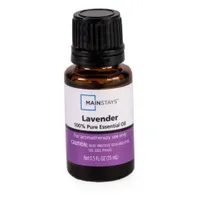How to get rid of beetles inside your house – 5 fast and effective methods
We asked pest control experts for their top tips to get beetles out of your home


Discovering beetles in your home is far from ideal. Whether they are damaging your carpets, raiding your pantry, or just making an unwelcome appearance, beetles are pests that many homeowners would rather live without.
Thankfully, getting rid of them and keeping them out for good isn’t as daunting as it might seem. After consulting with pest control experts, we've found plenty of simple and effective methods to get rid of beetles quickly and prevent their return.
From natural deterrents to a spot of spring cleaning, we share some tried-and-tested beetle repellents below.
How to get rid of beetles inside your house
'Beetles are the most numerous animals on the planet. There are more different species of beetles than any other animal species, thus there are more possible infestations from beetles than any other pest species,' explains Scot Hodges, Vice President of Professional Development and Technical Services at Arrow Exterminators. 'So when you ask 'how do I get rid of beetles?' The simplest answer is 'it depends'.'
Identifying types of beetle

Before you can get rid of beetles inside your home, it's important to know what you're dealing with. Here are some common types of household beetles that you may encounter:
- Carpet Beetles: Look for small, oval beetles approximately 1/8 inch long with colorful patterns of white, brown, yellow, and black on their hard shells. They are often found in textiles and closets.
- Drugstore Beetles: Identify these pests by their small, cylindrical brown bodies, about 1/10 to 1/8 inch in length, and their ability to penetrate packaging to infest dry goods.
- Click Beetles: These are recognizable by their elongated bodies (up to 1 inch long) and their unique ability to snap their bodies to produce a clicking sound to right themselves if flipped over.
- The Asian Beetle: These can be identified by their round, dome-shaped bodies that range in color from light tan to orange-red with varying numbers of black spots on their wing covers.
- Japanese Beetles: Distinguished by their shiny metallic green and copper brown wing covers, about 3/8 inch long, often seen eating plants in large, damaging groups.
What types of beetle require pest control?
Depending on what type of beetle infestation you have, you may want to take a different approach. Scot Hodges explains:
'There are pest species of beetles that eat wood and can cause significant damage to your home. There are beetle species that eat fabrics and cause significant damage to your clothes, furniture, rugs, and other animal-derived materials. There are beetles that are considered “stored product pests” or “pantry pests” that eat the same foods you feed your family and can destroy or contaminate different foods in your pantry or cabinets.'
These are the approaches Scot recommends for each of the above:
Design expertise in your inbox – from inspiring decorating ideas and beautiful celebrity homes to practical gardening advice and shopping round-ups.
- For wood-destroying beetles, it will be necessary to contact a professional to identify and treat them to avoid costly damage to your home and/or wooden furniture.
- For pantry pests, I recommend thoroughly inspecting all food items in the cabinets and pantry to determine what has been infested and discarding infested items.
- For fabric beetles, it is recommended that you consult a pest management professional for proper identification and treatment.

Scot Hodges is the President of Professional Development and Technical Services at Arrow Exterminators, Atlanta-based pest control experts. Since 1964, Arrow Exterminators has been a family-owned pest and termite control company serving Americans throughout the Southeast.
If your beetle problem hasn't tipped over into a full blown infestation, you may want to try the following techniques to get rid of beetles in your home before calling the experts in:
Seal your home

Certain beetles – such as Lady Beetles – can invade our homes in large numbers during the spring and fall in some areas and will overwinter in homes. The best way to prevent this is to seal and caulk entry points to limit how many get inside your home.
Inspect all windows, doors, and foundation walls regularly for cracks or gaps and seal these areas with silicone caulk or weatherstripping. You may also find it helpful to install door sweeps at the bottom of your exterior doors. This not only keeps beetles out but also helps prevent other pesky insects from entering your home.
Ensure that all of your home's vent covers are intact and free from holes. Use this opportunity to replace any damaged screens on windows or attic vents to keep flying beetles and other pests out.
'Lady beetles are flying pests, so you may still notice large numbers around the structure of your home, and they will also still try to enter,' explains Scot Hodges. 'So, the effectiveness of this method needs to be judged based on how many enter your home since you may still see large amounts around the exterior of the structure.'
Clean & Declutter
Beetles and other pests love to hide in cluttered, undisturbed areas, so it pays to regularly declutter your home and dispose of unwanted items to minimize potential hiding spots for beetles.
You should also commit to regular cleaning sessions to sweep away any potential beetle eggs or larvae (carpet beetle larvae can be particularly damaging if left unchecked). Focus on often neglected areas, such as the spaces under furniture and corners where lint and debris can accumulate.
Beetles are also attracted to food sources and moist environments, so clear your kitchen counters and remove any leftover food from kitchen surfaces. Keep your pantry staples airtight and regularly empty trash cans containing food. Fix any leaky faucets, pipes, or drainage issues in and around your home, and try using dehumidifiers in damp areas like basements or laundry rooms to lower humidity levels.
Maintain your yard
'Another way of preventing beetles from entering your home is maintaining a well-groomed yard,' explains Rachel Bull, Head of Gardens at Homes & Gardens. 'Keep trees and shrubs trimmed back from your house, as this removes the natural 'bridges' beetles use to find their way into your home.
'Similarly, while mulch can beautify your garden beds, it can also attract beetles if it’s too close to your home’s foundations. Try to keep mulch at least 6 inches away from the walls.'
Some plants are natural pest repellents, so planting beetle-repellent plants like garlic, chrysanthemums, and rue around the perimeter of your house can naturally deter these pests from settling in.
Use natural beetle remedies

Before resorting to toxic chemicals in your home, it's worth exploring natural beetle remedies to get to the bottom of your problem.
Lavender
Although lavender is widely hailed as one of the best scents for wellbeing, its strong aroma is disliked by many insects, including beetles. So, you can put this fragrant herb to use in various ways throughout your home:
- To repel fabric pests such as carpet beetles, try placing sachets of dried lavender in closets, drawers, and cupboards.
- Create your own lavender oil spray by mixing 10-15 drops of essential oil with a cup of water in a spray bottle. Mist this solution around windows, doors, and other beetle entry points. You could also create a DIY lavender rug freshener to ward off beetles and keep your carpets smelling fresh in the process.
Pure Lavender Essential Oil | $4.87 at Walmart
This therapeutic-grade lavender essential oil is highly rated for its relaxing, floral aroma.
Neem Oil
Neem oil is a natural pesticide found in the seeds of the neem tree and is safe for use around pets and children when used properly. It's an excellent all-around pest repellent and can disrupt the life cycle of beetles by preventing their larvae from developing properly.
To use it in your home, mix 2 teaspoons of neem oil with 1 quart of water and a few drops of dish soap (to emulsify the mixture). Spray this DIY solution on houseplants and on entry points for beetles, like windowsills and doorways. Repeat every two weeks for best results.
You can purchase a 2oz bottle of Organic Neem Oil at Walmart for under $6.
Peppermint Oil
Another tried-and-tested natural beetle repellent is peppermint oil. Its strong scent is known to get rid of mice, and it is particularly effective against many types of beetles. To use it, simply add a few drops of peppermint oil to cotton balls and place them in areas where beetles are a problem, like under appliances, inside cabinets, or near entryways.
Alternatively, combine 15-20 drops of peppermint essential oil with 1 quart of water in a spray bottle. Shake well and spray along baseboards, in corners, and other beetle-prone areas.
Remember - natural oils tend to evaporate or degrade over time, so for the best results, it's a good idea to reapply your homemade repellents every 1-2 weeks or after heavy rains if used outdoors.
You may also wish to use these natural deterrents in combination with other methods, such as sprinkling diatomaceous earth and sealing your home entry points. A multi-pronged approach can double or triple your chances of success.

Diatomaceous Earth is a child and pet-safe method for killing beetles in your home. It works by drying out their exoskeletons, leading to dehydration and death (not very nice, but certainly effective). Sprinkle some DE around areas of your home where beetles are found to reduce their numbers.
'For the most part, beetles are beneficial insects, and we can coexist with them easily,' reminds Scot Hodges, President of Professional Development at Arrow Exterminators. 'Although there are a large number of beetle species that can and will cause damage to your home, the percentage of those species is very small compared to the number of beneficial species.'
So, if you can get rid of beetles in your home without causing them harm, you can do your bit for your local ecosystem.

Gabriella is a freelance contributor for Homes & Gardens. She is a DIY enthusiast and a lover of all things interior design, often found antiquing or browsing the aisles of her local hardware store. She has a particular passion for historic buildings and is in the process of renovating a Victorian coachhouse in the countryside.
For much of the past decade, Gabriella has worked as a freelance writer, crafting copy for national publications and renowned homeware brands. Most recently, she worked for Homebuilding & Renovating Magazine and is the former Head of Solved at Homes & Gardens, focusing on case studies for the magazine and website, as well as writing features about issues surrounding historic and listed building projects.

